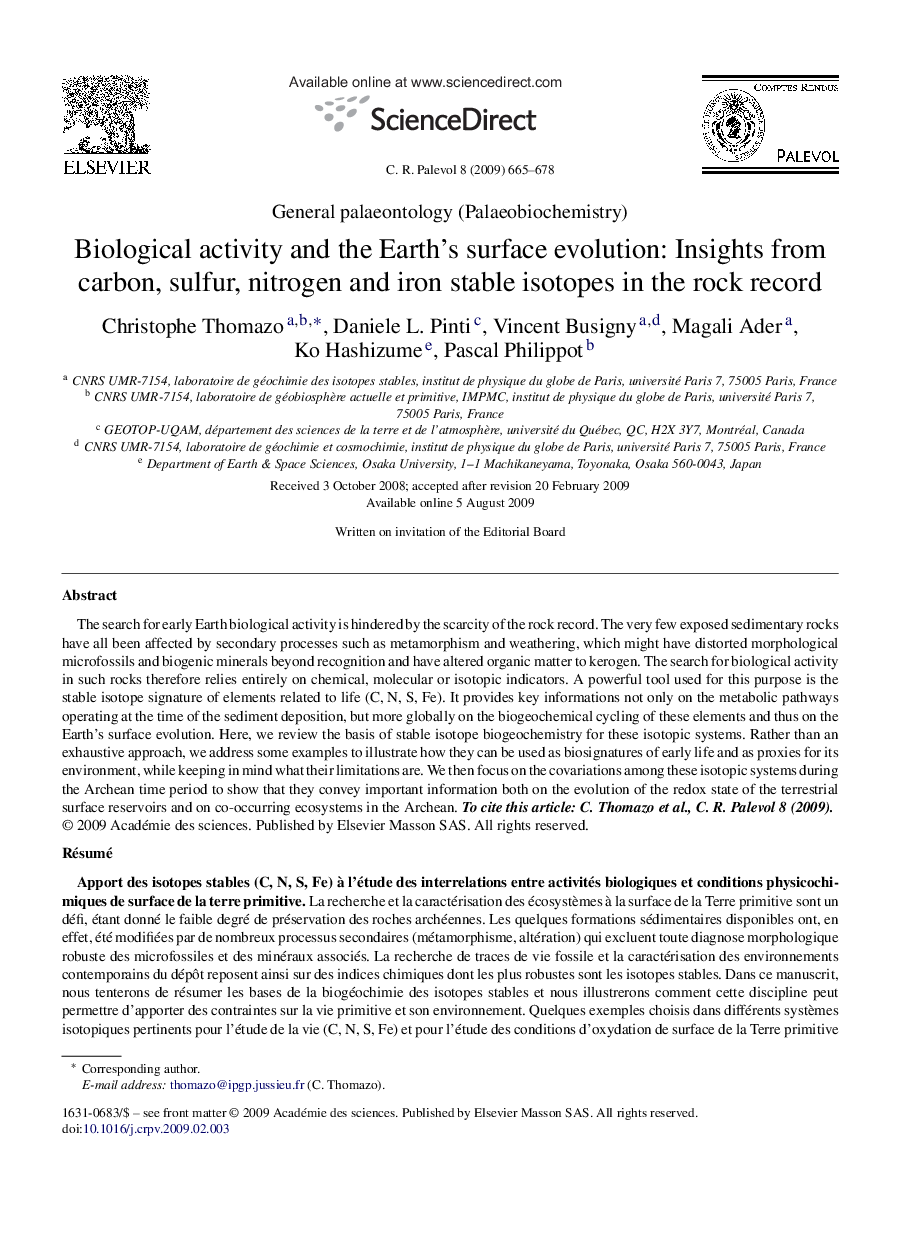| Article ID | Journal | Published Year | Pages | File Type |
|---|---|---|---|---|
| 4746192 | Comptes Rendus Palevol | 2009 | 14 Pages |
The search for early Earth biological activity is hindered by the scarcity of the rock record. The very few exposed sedimentary rocks have all been affected by secondary processes such as metamorphism and weathering, which might have distorted morphological microfossils and biogenic minerals beyond recognition and have altered organic matter to kerogen. The search for biological activity in such rocks therefore relies entirely on chemical, molecular or isotopic indicators. A powerful tool used for this purpose is the stable isotope signature of elements related to life (C, N, S, Fe). It provides key informations not only on the metabolic pathways operating at the time of the sediment deposition, but more globally on the biogeochemical cycling of these elements and thus on the Earth's surface evolution. Here, we review the basis of stable isotope biogeochemistry for these isotopic systems. Rather than an exhaustive approach, we address some examples to illustrate how they can be used as biosignatures of early life and as proxies for its environment, while keeping in mind what their limitations are. We then focus on the covariations among these isotopic systems during the Archean time period to show that they convey important information both on the evolution of the redox state of the terrestrial surface reservoirs and on co-occurring ecosystems in the Archean.
RésuméLa recherche et la caractérisation des écosystèmes à la surface de la Terre primitive sont un défi, étant donné le faible degré de préservation des roches archéennes. Les quelques formations sédimentaires disponibles ont, en effet, été modifiées par de nombreux processus secondaires (métamorphisme, altération) qui excluent toute diagnose morphologique robuste des microfossiles et des minéraux associés. La recherche de traces de vie fossile et la caractérisation des environnements contemporains du dépôt reposent ainsi sur des indices chimiques dont les plus robustes sont les isotopes stables. Dans ce manuscrit, nous tenterons de résumer les bases de la biogéochimie des isotopes stables et nous illustrerons comment cette discipline peut permettre d’apporter des contraintes sur la vie primitive et son environnement. Quelques exemples choisis dans différents systèmes isotopiques pertinents pour l’étude de la vie (C, N, S, Fe) et pour l’étude des conditions d’oxydation de surface de la Terre primitive (fractionnement indépendant de la masse du soufre) nous permettrons d’illustrer de façon non exhaustive l’approche isotopique et ses limitations dans la recherche de biosignatures. Enfin, nous présenterons les variations séculaires de ces 4 isotopes durant l’Archéen, afin d’illustrer les interrelations biogéochimiques dans les cycles C-S-N-Fe.
